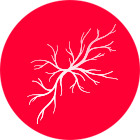A new method of treating varicose veins
The most advanced and least traumatic method of treating varicose veins is the use of biochemistry.
TREATMENT OF VARICOSIS BY BIOCLEARING MORE LIKE THE REST FOR THE PROCEDURE THAN THE OPERATION:
- is carried out on an outpatient basis;
- does not require any patient preparation;
- an ultra-fast procedure that lasts about 30-45 minutes;
- painless and comfortable procedure for the patient (local anesthesia is used by the doctor only at the puncture site through which the catheter is inserted - one injection);
- is performed without incisions and surgical operations of a traumatic nature;
- is not a thermal surgery, so there is no risk of hemorrhage and nerve fibers with loss of skin sensitivity;
- does not require general anaesthesia;
- differs in the absence of need (even short-term) in compression underwear after the procedure;
- characterized by high security;
- does not require bandaging and postoperative care;
- differs in the absence of a rehabilitation period: the patient leaves the clinic on the day of the procedure and can immediately return to his daily life - the usual activities can be done in a few hours after the procedure;
- the procedure is recommended for the elderly;
- the method is recommended for patients with a low pain threshold;
- According to scientists, it not only solves the problem of vein treatment but also aims at preventive measures.
CONTRAINDICATIONS TO THE PROCEDURE ARE VERY LIMITED:
The technique of adhesive obliteration of veins is not intended for patients with the following conditions:
- the presence in the past of a hypersensitivity reaction to BIOGLUE (cyanoacrylate bioadhesive);
- acute superficial thrombophlebitis;
- migrating thrombophlebitis;
- acute sepsis.
DESCRIPTION OF THE PROCEDURE:
How is BIOGLUE treatment:
- If necessary, the skin is anaesthetized.
- A catheter is inserted into the pathologically altered vein, through which bioglue is injected using a special syringe.
- The drug does not require the use of anaesthetics, everything happens as a regular intravenous injection.
- The catheter is inserted to the required level. With the help of ultrasound diagnostics, the correct location of the catheter is monitored.
- Then 0.1 ml of bioglue is injected into a vein every 3 cm, alternately pressing on each segment of the vein.
- The glue closes the vein from the inside, during the procedure the patient does not feel discomfort.
- At the end of the procedure, there is no rehabilitation period, the patient can go home immediately.
- The visual effect comes almost instantly - the legs will be smooth and beautiful, without bruises and signs of medical intervention, the characteristic vascular pattern and twisted veins will disappear.
- Approximately the whole procedure takes up to 45 minutes.
During the period from 6 to 24 months after the procedure, the bioglue completely biodegrades and dissolves, leaving no "traces". At ultrasonic control of a vein, it will not be visible.
Bioglue has been actively used in the treatment of varicose veins in clinics in the United States, Europe, Australia and India for over 5 years.
Modern Diagnostics of Vascular Pathology




